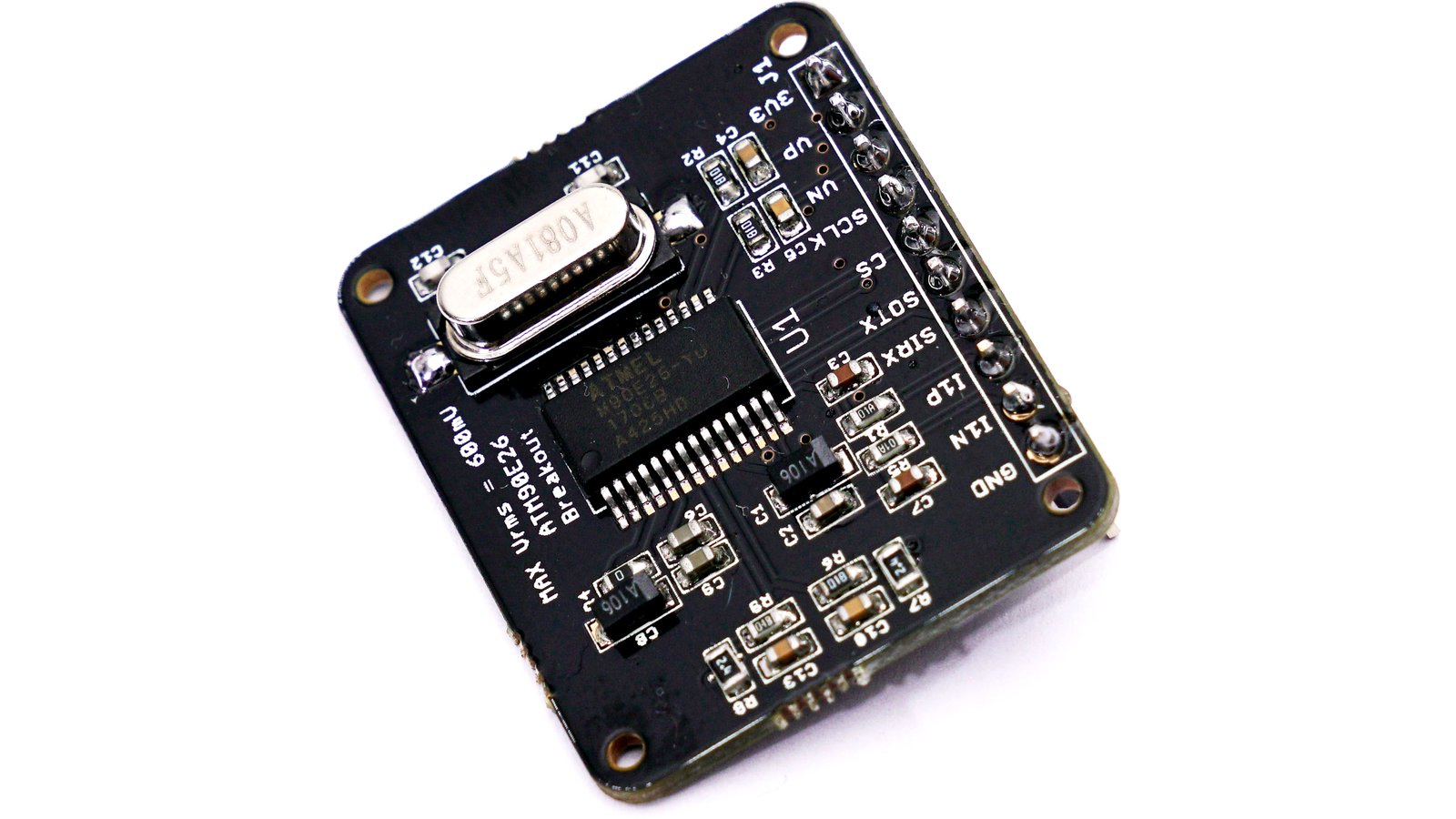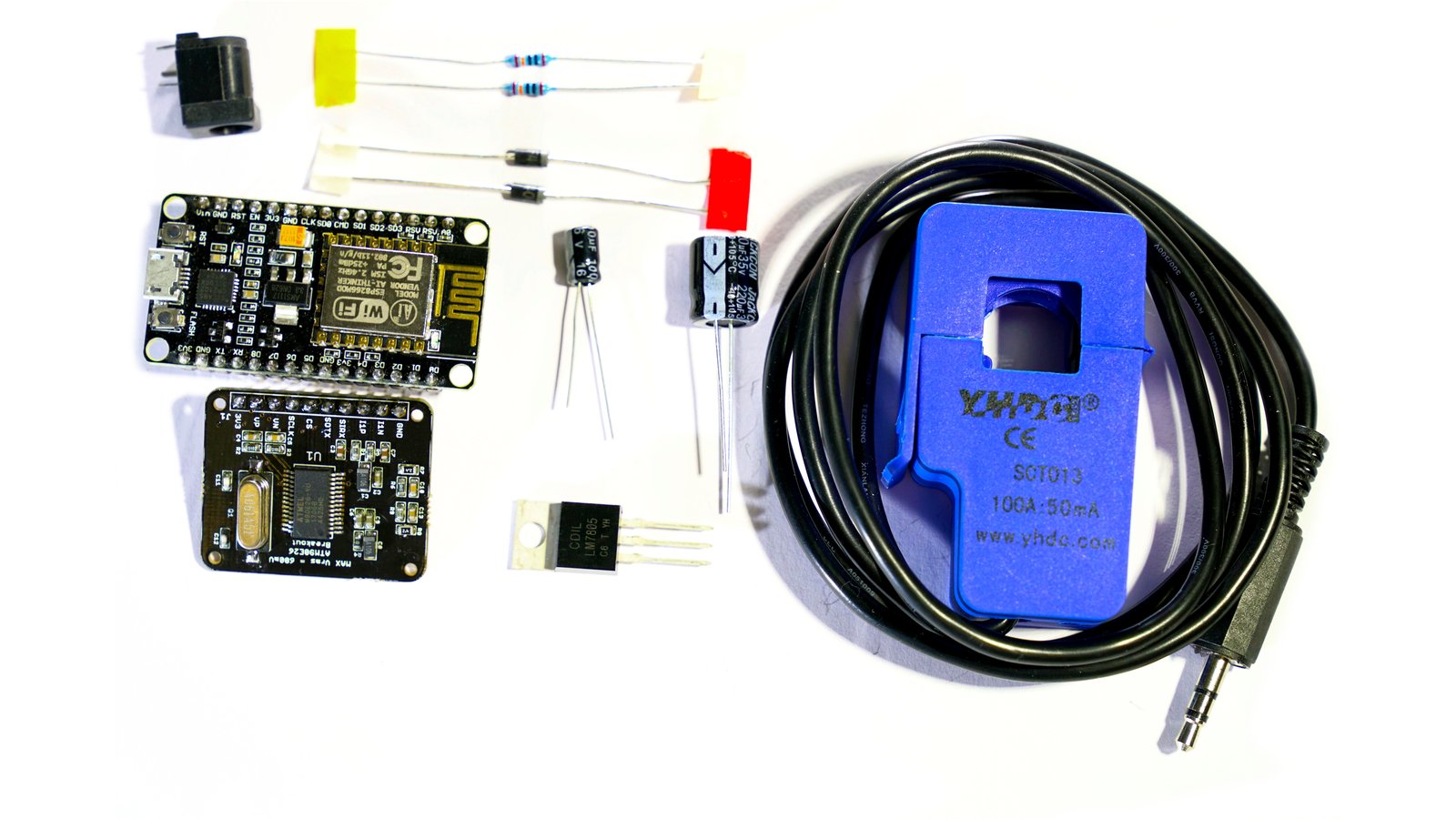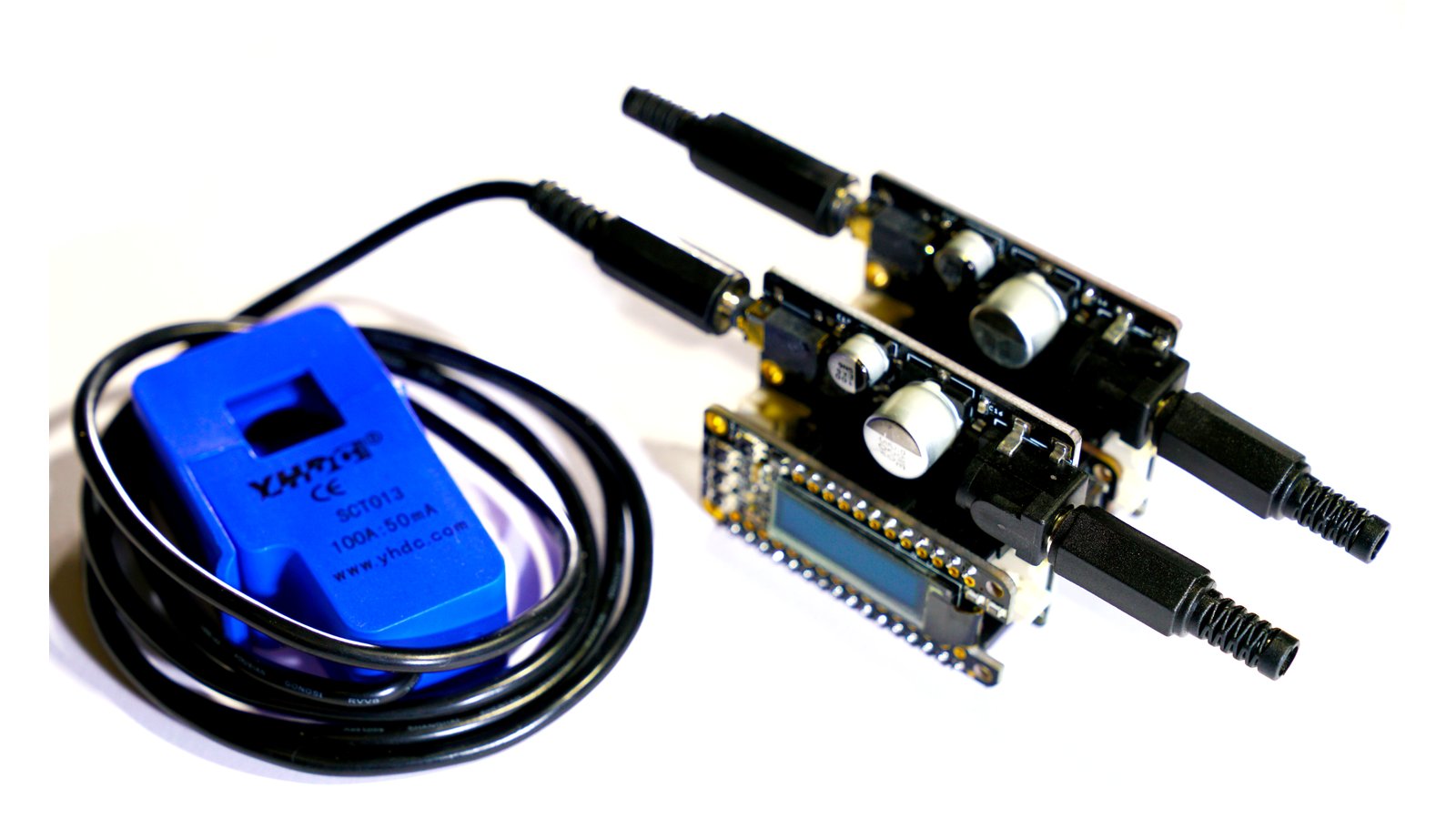The Microchip ATM90E26 is a utility-grade energy monitoring chip for those of us who care about a stable, sustainable power system and who want to understand how we are using electricity so we can make savings that will benefit our families and hip-pockets. This devkit allows the flexibility to build a custom energy monitoring system using the ATM90E26 with libraries supporting major Arduino flavours, mbed, Particle, and Raspberry Pi.
We all love our tech and modern conveniences but in an increasingly energy-hungry world it can be tough to keep track of energy consumption and avoid "bill shock" when the prices just seem to keep going up and up. Fortunately, the growing availability of renewables, especially roof-top solar, has put some power back into the hands of individuals. When this is paired with accurate data to help unravel the complexities of energy generation, storage, transmission, and usage, we - as responsible, intelligent consumers - are in a much better position to take control of our energy usage.
By logging a household’s energy usage and generation patterns, this monitor provides householders with accurate, utility-independent data about what is going on in their own home. This data is invaluable for making informed decisions about when to replace aging appliances with more energy efficient models and helps with identifying the best times to perform certain tasks so that a household is getting maximum value and efficiency from its solar system with minimum impact on lifestyle.
On a larger scale, this monitor will assist utilities through the provision of detailed customer usage data that can inform grid management decisions and allow customers to receive rebates.
The ATM90E26 is a utility grade energy monitor and it is my aim to make the development kit available to everyone, regardless of their budget. Affordability comes from ensuring the retail price is kept down, however the low-price comes with the DIY caveat requiring some user expertise to connecting to a data-logging platform as part of setting the monitor up for use.
It’s no secret that the total cost-of-ownership of appliances is often more than the initial purchase cost. Be that as it may, it’s nice to have science to help with justifying expensive purchase decisions - as it was in my house when the energy monitor provided all the data I needed to make the case to my wife for replacing our old electricity gobbling plasma TV with a newer, more efficient one.
I then threw the challenge out there to members of Hackerspace Adelaide asking how they would use an energy monitor and here are some of the responses.
Edgardo Muñoz-Nájar Galvez:
"Installing energy monitoring equipment in my house has changed our
energy management. You can easily visualise which appliances are
causing clear peaks of consumption. Who knew toasters were such bad
offenders. We used to do laundry after coming for work. Now we do
laundry, roasting, etc during the day when our solar panels can take
most of the load. The difference between leaving computer screens
in stand by and unplugging them is evident as well."
Peter Leske:
"How much power is consumed while the house is empty?"
Stephen Coles:
"I also use mine to calculate what energy contracts are best for
me. Having an accurate history of power usage has been
enlightening!"
This energy monitoring device provides users with some accurate utility grade hardware that can be easily configured to use any data logging paradigm. Pair the monitor with a microSD card for a fixed period log to establish a baseline or, to build up an energy usage profile over a longer period, upload data via Wi-Fi to the data-logging platforms thingspeak or blynk.
The energy monitor utilises ESP8266 Arduino code for the Thingspeak and Blynk apps. The blynk app can already be used in bi-directional mode for calibrating the energy monitor. As the campaign progresses sample code for sending the measurements to any IoT platform that is popular among the backers will be built to interface with the ESP8266, Particle, or any mbed compatible platform.
The energy usage profile of a home may reveal data regarding occupancy patterns and the appliances in use, which is information you may not wish to share with the world. For those that do not want their data stored in a cloud-based platform but who are looking to build up a comprehensive energy profile, it is possible to protect a household’s privacy by logging the data locally.
Please have a look at the following videos to see the ATM90E26 in action.
This is how I have the Energy Monitor FeatherWing installed in my own house, the 240 V work needs to be done by a licensed electrician.
The ATM90E26 Energy Monitor differs from simple current clamp-based monitors that assume a fixed voltage level and cannot measure the power factor. The ATM90E26 samples both the AC current and voltage waveforms at 8 kHz with 16-bit resolution, which means that users can monitor active and reactive power, as well as RMS, voltage, and current.
A single ATM90E26 can monitor a whole home with a standard connection to the grid thanks to the design of the DIN Rail Module. Using dual ATM90E26, households with solar PV can perform import-export analysis on the home’s energy usage. By coupling the ATM90E26 breakout board or FeatherWing with a microcontroller, it is possible to build a customised monitoring solution for a home and even track individual appliances, just as I have done with my toaster oven to measure total energy consumption for a reflow cycle.
This energy monitor is open source and all the electronics and mechanical CAD files have already been made available for the ATM90E26 Breakout and FeatherWing. The same will apply for the DIN-rail version when its design is finalised. Our Arduino code is available on GitHub.
Vertically integrated energy monitors often come with their own cloud-based monitoring tool where there is no guarantee of the service persisting beyond the life of the commercial vendor. The beauty of the ATM90E26’s open design is that it allows users to choose their own firmware and the monitor will continue to function through generations of IoT platforms and protocol changes. Also, there is also no subscription fee for data logging beyond whatever the cost of the self-hosted system is.
As well as flexibility with the firmware, users of the ATM90E26 can also modify the hardware to improve measurement accuracy or even change the host processor. The design is suitable for manual assembly with basic SMD soldering knowledge (0603 components or larger used throughout).
The ATM90E26 Dev Kits will have different feature depending on reward level in a sliding scale of utility vs customisability, giving the freedom to pick and choose the setup that works best whatever your level as a DIYer. The highest end reward, the DIN-Rail monitor can be installed and used with minimal configuration, whereas the lowest end ATM90E26 Breakout board will require external microcontroller and sampling circuitry.
If you would like to use the ATM90E26 with your own design and want a well-tested, ready-to-go module and prototype on a breadboard before committing to a PCB, this breakout is for you.
The breakout will be PCB with all components populated and fully tested, without headers soldered for maximum flexibility. The breakout kit will include:
output type CT’s
The final use of the kit requires a 12V to 9V AC-AC transformer. See below for recommendations.
If like me you appreciate the great choice of Feather series boards from Adafruit and have grown beyond the breadboard already, then the FeatherWing will get you started on energy monitoring without creating a mess of wires. Just plug in a compatible Feather, some sensors, and you are ready to go.
The Feather kit includes:
Please note only female pin-headers will be included as part of this kit. Since there are many stacking options the final use may require different set of headers.
This pledge level is for those interested in a turn-key solution to energy monitoring without writing any specific code or choosing an IoT platform (default will be ThingSpeak). Just enter your Wi-Fi credentials and the DIN Rail Module will start uploading data. It is still hackable should you choose to change the server the data is sent to or any other tweaks.
While there are currently several energy monitors on the market, as well some Arduino-based or similar DIY projects, this energy monitor is unique in being open source and accurate using the ATM90E26 utility-grade metering chip.
| Compact | Multiple Networks | Open Source | Power Factor | Accurate | Price | ||
|---|---|---|---|---|---|---|---|
| ATM90E26 Devkit | Yes | BLE, Wi-Fi, LoRa, 3G | Yes | Yes | 1% or better | $60-80 | |
| Eyedro Home | Yes | Ethernet, Wi-Fi | No | No | Depends on clamp | $199 | |
| Neur.io | Yes | Wi-Fi Only | No | Yes | Yes | $219 | |
| Efergy True Power with hub | Requires hub | RF with Wi-Fi Gateway | No | Yes | 1% | $229.45 | |
| EmonPi | No | Wi-Fi, Radio | Yes | Yes | No (asynchronous sampling) | $157 |
The ATM90E26 Breakout and the ATM90E26 FeatherWing have been available via Tindie since 2016 and in that time relationships have been built with various PCB manufacturers, component suppliers, and assemblers. The ATM90E26 breakout is manufactured via Aisler in Germany because their platform and quality of assembly has been impressive with the existing units and the lead time they have quoted to produce future units is excellent.
All the PCBs from Hackvana and parts required for the first 100 FeatherWings are already at hand. The rest of the ATM90E26 FeatherWings will be mass manufactured by Aisler in Germany, then completed and tested in Australia.
Aisler has quoted on the manufacture of the ATM90E26 Breakout and ATM90E26 FeatherWing with a lead time of around 2-4 weeks depending on quantity ordered. ATM90E26, FeatherWing panels, and ancillary parts for 100 units assembled in Australia are at hand. Mechanical design for the multi-PCB DIN-rail energy monitor has been completed and fit of all the planned functionality/boards verified using proto-board based mock-ups.
Assembling the early delivery FeatherWings will begin once the campaign launches. A large-batch production order will be finalised once the campaign ends. Aisler has quoted 2-3 weeks to delivery from the arrival of all parts. Design of the DIN-rail monitor electronics and final PCB + enclosure assembly will take up the rest of the time till final project delivery.
Availability of parts can always be an issue. For example, in December the ATM90E26 was out of stock and backorder arrived beginning of March. I have currently secured 200+ ATM90E26’s for use with this project. If demand exceeds this, unforeseen delays may arise.
The DIN-Rail format poses unique design challenges. It involves combined mechanical and electrical design to make optimal use of the space, as well as high-voltage design taking creepage and clearance into consideration. I have studied a fair few energy meters employing the DIN-rail form factor and have a prototype in place which performs as expected. However the final design may encounter unexpected hurdles and differ in appearance from the prototype. I will try my best to stick to the M2 form factor and not add additional volume.
This product is meant for use with mains voltages for energy monitoring. While sufficient precautions have been taken to isolate the hobbyist systems using current and voltage transformers, installation may require working in the vicinity of live systems. Please take adequate precautions and employ qualified help if in doubt.
"Smart AC Monitoring: Without the $500 Price Tag"
"Tisham has built custom IoT (internet of things) based energy monitors using commercial grade chips typically used in Smart Meters."
"SMART energy monitors are helping create carbon efficient homes by giving consumers more flexibility and information regarding energy use."
Produced by whatnick in Adelaide, Australia.
Sold and shipped by Crowd Supply.
Thanks for helping us close the loop on energy usage.

A breadboard-compatible ATM90E26 module I made to save myself hundreds of dollars, which earned me a mention on Hackaday. Now it can help you get started with energy monitoring as well.

All the parts you will need to use the ATM90E26 on a breadboard to build a self-powering energy monitor with Wi-Fi connectivity. A NodeMCU and a 100 A YHDC current clamp will be included as part of the kit. Voltage sampling transformer is the only other part the user has to supply.

An Energy Monitor Featherwing with some essentials to get you going. The Adafruit Feather and a 100 A YHDC current clamp will be included as part of the kit. Voltage sampling transformer is the only other part the user has to supply.

Whatnick INC is a consulting engineering company mainly working in the Energy Monitoring arena. We aim to build open-source hardware and empower users to put their own monitoring solutions together.